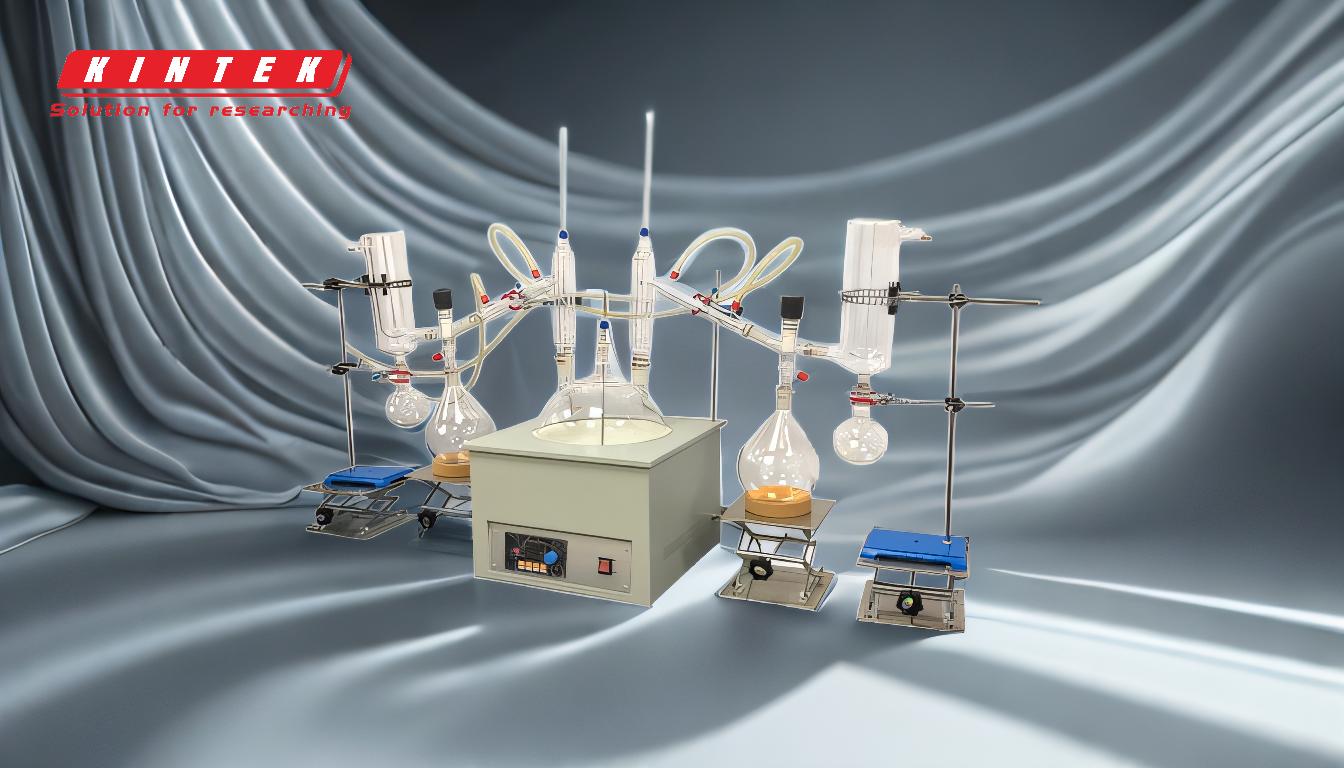Simple distillation is a fundamental process used to separate liquids with significantly different boiling points. It involves heating a liquid mixture to its boiling point, capturing the vapor, and condensing it back into a liquid in a separate container. This method is particularly effective for purifying water, creating alcoholic beverages, and producing essential oils. The process is straightforward, requiring basic equipment like a boiling flask, condenser, and receiving flask. However, its efficiency is limited to mixtures where the boiling points of the components differ by at least 40°C to 70°C. Simple distillation is widely used in both laboratory and industrial settings due to its simplicity and effectiveness for specific applications.
Key Points Explained:

-
Definition of Simple Distillation:
- Simple distillation is a single-stage process where a liquid mixture is heated to its boiling point, and the resulting vapor is condensed into a separate container. This method is ideal for separating components with significantly different boiling points, such as water and salt.
-
Equipment Used:
- The basic setup includes:
- Boiling Flask: Where the liquid mixture is heated.
- Condenser: Cools the vapor back into a liquid.
- Receiving Flask: Collects the condensed liquid.
- This setup is simple and widely used in both laboratory and industrial settings.
- The basic setup includes:
-
Process Steps:
- Heating: The liquid mixture is heated in the boiling flask until it reaches its boiling point.
- Vaporization: The component with the lower boiling point vaporizes first.
- Condensation: The vapor travels through the condenser, where it is cooled and turned back into a liquid.
- Collection: The condensed liquid is collected in the receiving flask.
-
Applications of Simple Distillation:
- Water Purification: Used to remove impurities and salts from water, producing distilled water.
- Alcoholic Beverages: Separates alcohol from fermented mixtures.
- Essential Oils: Extracts oils from herbs and plants for perfumes and flavorings.
- Industrial Uses: Purifies liquid products obtained from chemical synthesis and stabilizes crude oil for safe storage and transportation.
-
Limitations:
- Boiling Point Difference: Effective only when the boiling points of the components differ by at least 40°C to 70°C.
- Separation Efficiency: Offers low separation efficiency compared to more complex distillation methods like fractional distillation.
- Purity: Provides a moderate improvement in purity, as the vapor has a higher purity than the boiling liquid but may still contain some impurities.
-
Examples of Simple Distillation:
- Distilling Water: Removing salt and other impurities from seawater to obtain pure drinking water.
- Homemade Perfumes: Extracting essential oils from plants.
- Liquor Production: Separating alcohol from fermented mixtures to create spirits.
- Soap Making: Purifying liquids used in soap production.
-
Advantages:
- Simplicity: Easy to set up and operate with basic equipment.
- Speed: Faster than more complex distillation methods.
- Cost-Effective: Requires less energy and resources compared to fractional distillation.
-
Disadvantages:
- Limited Separation: Not suitable for mixtures with similar boiling points.
- Purity Limitations: Cannot achieve high levels of purity for complex mixtures.
- Energy Consumption: Requires continuous heating, which can be energy-intensive.
In summary, simple distillation is a versatile and straightforward method for separating liquids with significantly different boiling points. Its applications range from water purification to the production of alcoholic beverages and essential oils. While it has limitations in terms of separation efficiency and purity, its simplicity and cost-effectiveness make it a valuable tool in various fields.
Summary Table:
| Aspect | Details |
|---|---|
| Definition | Single-stage process to separate liquids with different boiling points. |
| Equipment | Boiling flask, condenser, receiving flask. |
| Process Steps | Heating, vaporization, condensation, collection. |
| Applications | Water purification, alcoholic beverages, essential oils, industrial uses. |
| Limitations | Requires 40°C–70°C boiling point difference; low separation efficiency. |
| Advantages | Simple, fast, cost-effective. |
| Disadvantages | Limited separation, moderate purity, energy-intensive. |
Need help with distillation processes? Contact our experts today for tailored solutions!









